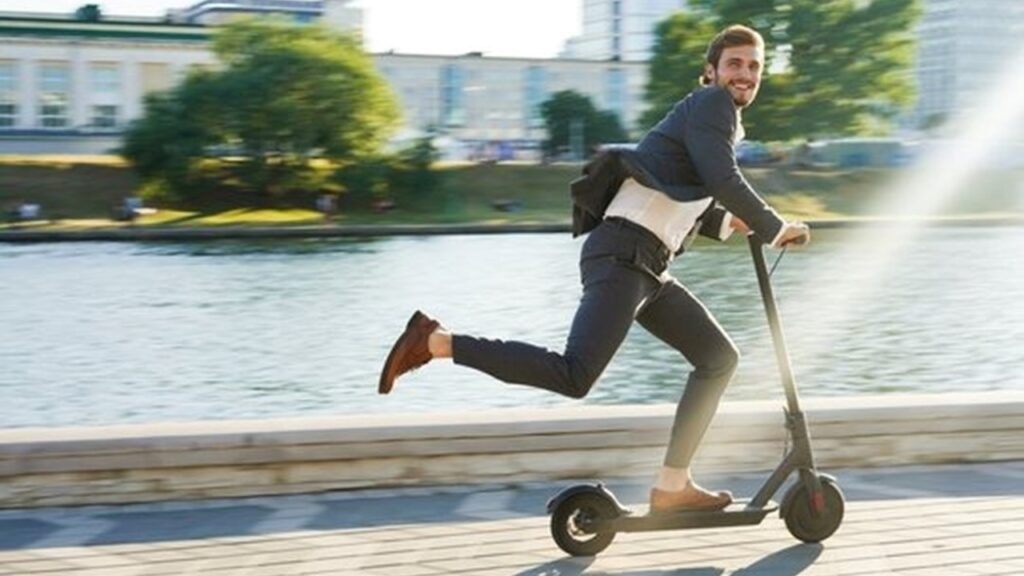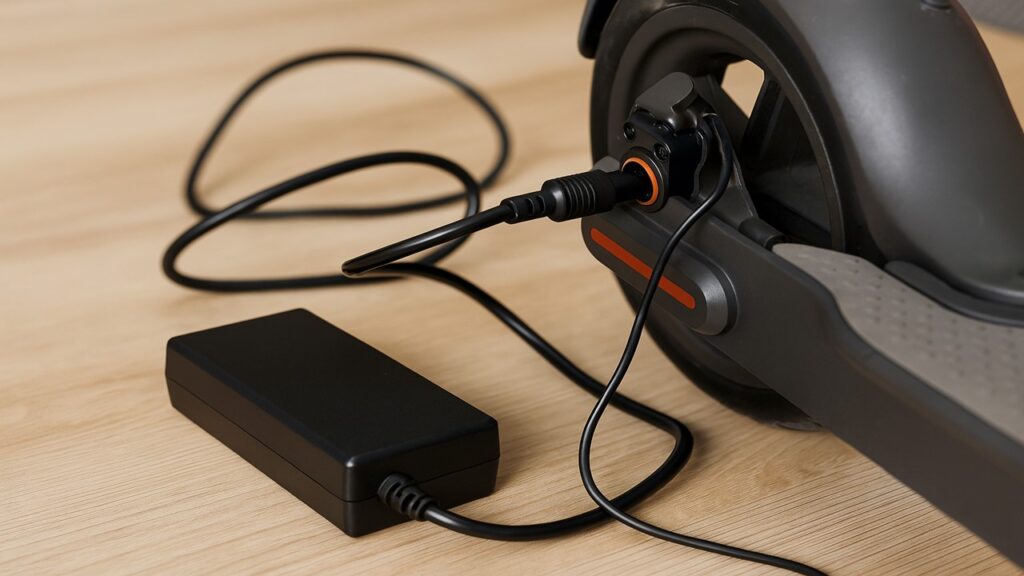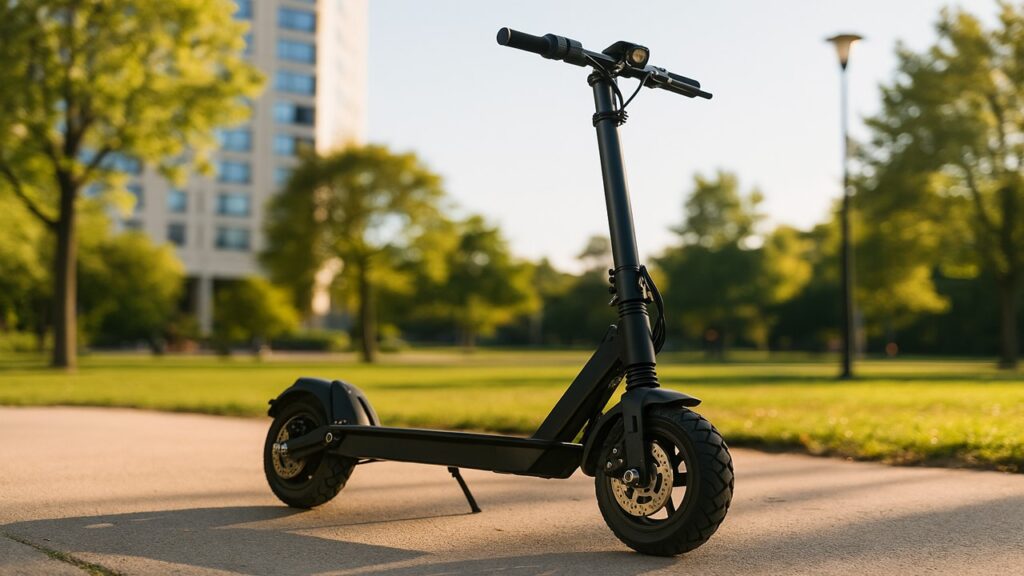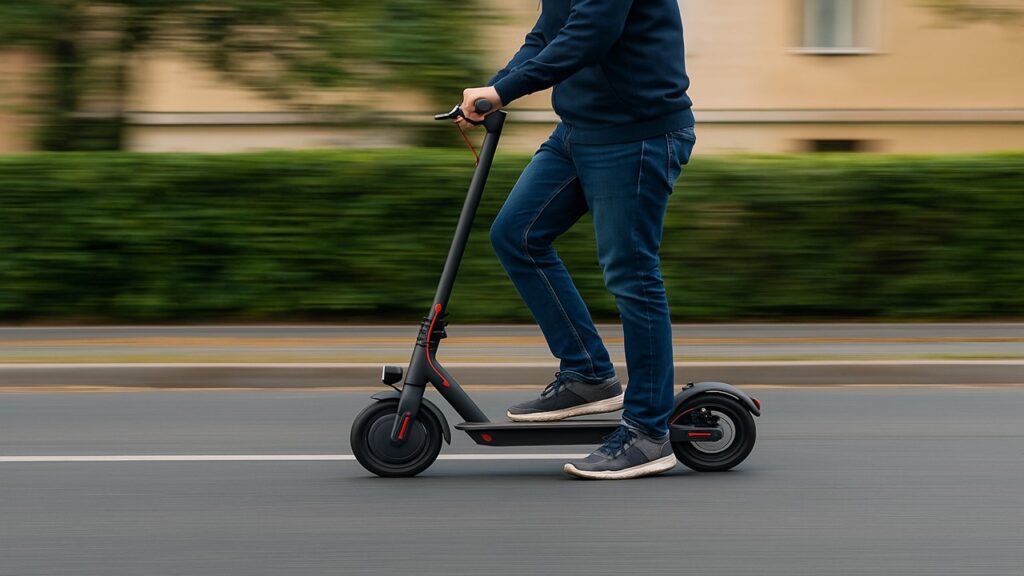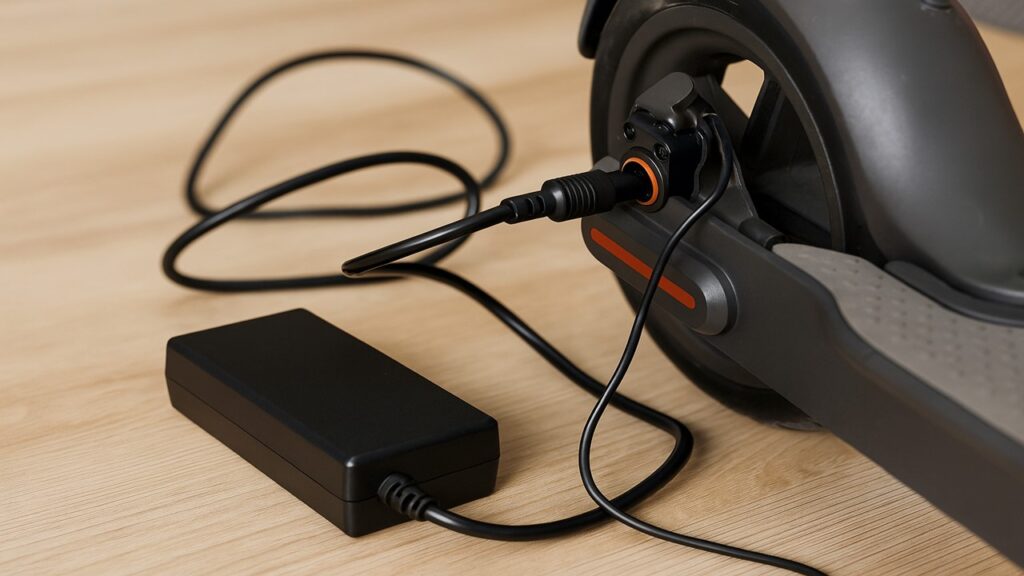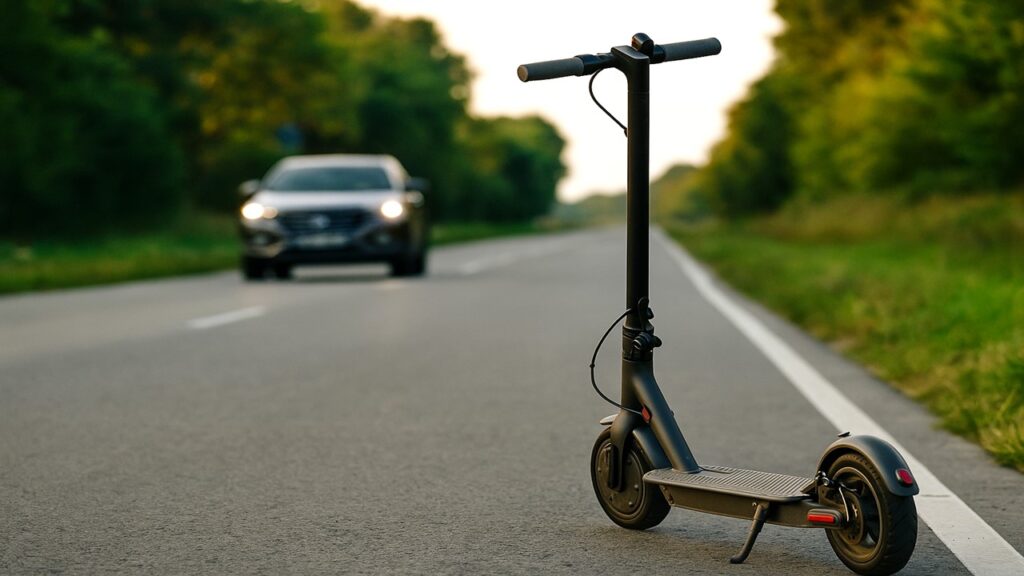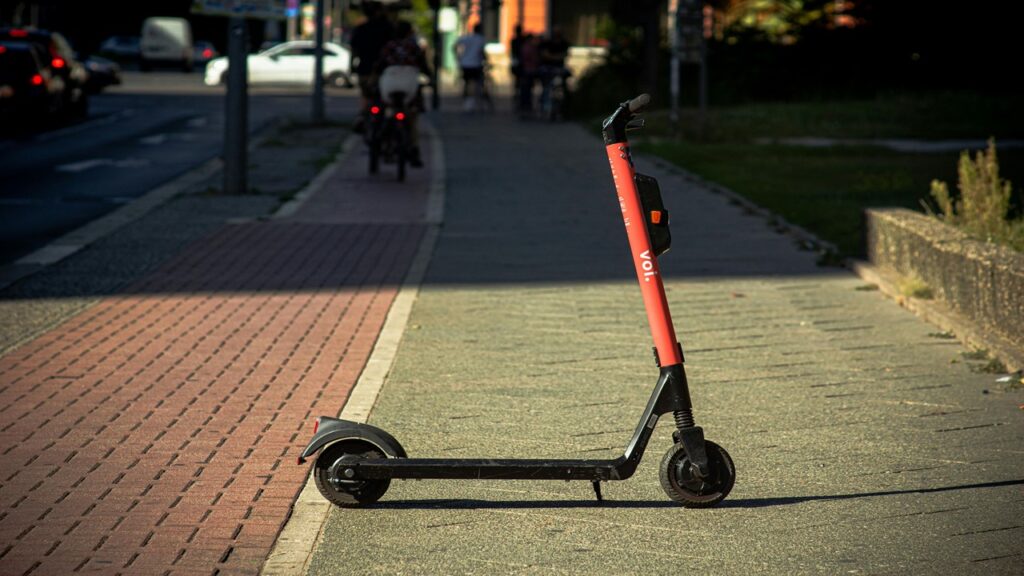
If your electric scooter is not turning on, the issue usually comes down to the power supply or an electrical fault. Most problems are simple to diagnose, and with the right steps you can often fix them yourself without needing professional repair.
Key Summary
- A dead or depleted battery is the most common reason an electric scooter won’t turn on, especially if it hasn’t been charged or stored properly.
- A faulty charger, damaged charging port, or loose wiring can interrupt power flow and prevent the scooter from starting.
- Safety features like kickstand or brake sensors, along with blown fuses, often block startup even when the scooter seems fully charged.
- Advanced issues such as controller faults, water damage, or display malfunctions usually require professional diagnosis and repair.
Why Won’t My Electric Scooter Turn On? (Main Causes)
A scooter that won’t power up is usually linked to the battery, charger, or electrical connections. Here are the most common reasons:
- Battery is dead or depleted
- Charger or charging port is faulty
- Wiring or connectors are loose
- Fuse is blown or circuit breaker is tripped
- Power button or key switch has failed
- Safety switches are preventing startup
- Controller or display has malfunctioned
- Moisture or water damage has affected components
Let’s look at each of these causes in more detail.
Dead or Depleted Battery
A weak or dead battery is the leading cause of a scooter not powering on. Batteries degrade over time, and leaving them uncharged for long periods accelerates the problem. In cold storage, lithium cells can also drop below safe voltage. If the scooter shows no lights or signs of life after charging, the battery may need replacement.
Faulty Charger or Charging Port
Even a healthy battery cannot work if the charger fails. Look at the charger’s indicator light: red usually means charging, while green indicates full or not charging at all. If the charger light stays green with a dead battery, the issue could be the charger itself or the charging port on the scooter.
Loose Wiring or Poor Connections
Scooters endure vibrations that loosen connectors over time. A slightly disconnected wire between the battery, controller, or motor can block power. Inspect all visible connectors and look for corrosion near the terminals.
Blown Fuse or Tripped Circuit Breaker
Scooters have fuses or breakers that cut power to prevent overload. A blown fuse will stop the scooter from turning on completely. Check the fuse housing near the battery or controller. Replace only with the same rating, or reset the breaker if equipped.
Power Button or Key Switch Failure
Sometimes the problem is as simple as the power button. Some models require you to hold the button for several seconds. Dirt, moisture, or worn-out contacts may stop the button or switch from completing the circuit.
Safety Switches Preventing Startup
Most scooters have built-in safety interlocks. If the kickstand is down, the brake lever sensor is engaged, or the kill switch is on, the scooter will not turn on. Always double-check these before moving to more advanced troubleshooting.
Controller or Display Malfunctions
The controller is the scooter’s brain. If it fails, no power flows to the motor or display. A blank display can also give the impression the scooter is off, even if it has power. Both cases often require professional repair.
Moisture or Water Damage
Exposure to rain or puddles can short sensitive electronics. If the scooter was recently wet, it should be completely dried before trying to power it back on. Moisture can corrode connectors and prevent the scooter from responding.
How to Troubleshoot an Electric Scooter That Won’t Start (Step-by-Step Guide)
If your scooter doesn’t respond, the best approach is to check simple causes first before moving into advanced steps.
- Step 1: Check the battery and charger
- Step 2: Inspect wiring and connections
- Step 3: Test the power button and safety switches
- Step 4: Examine the fuse or circuit breaker
- Step 5: Consider environmental or advanced issues
- Step 6: Seek professional help if needed
Let’s go through each of these steps in more detail.
Step 1: Check the Battery and Charger
Charge the scooter fully, using a known working outlet. Watch the charger’s light to confirm activity. If possible, use a voltmeter to check if the battery holds charge. A very low reading suggests the battery is failing.
Step 2: Inspect Wiring and Connections
Open the deck or panels and visually inspect wiring. Re-seat loose connectors, clean corroded terminals, and check for melted insulation. Even one loose wire can stop the scooter from turning on.
Step 3: Test the Power Button and Safety Switches
Hold down the power button for several seconds. Confirm the kickstand is up and brakes released. Check if the kill switch is off. These safety interlocks often explain why scooters refuse to power up.
Step 4: Examine the Fuse or Circuit Breaker
Locate the fuse box near the controller or battery. If the fuse wire is broken, replace it with one of the same rating. If your scooter uses a circuit breaker, press the reset button before retrying.
Step 5: Consider Environmental or Advanced Issues
Cold weather reduces battery performance, while water exposure can cause shorts. If the scooter has been in either condition, allow it to dry or warm up before turning it on. For signs of rust, clean with a mild baking soda solution.
Step 6: Seek Professional Help if Needed
If none of the above steps work, the issue may lie in the controller, display, or motor. These components require specialized tools to test. If your scooter is under warranty, contact the manufacturer or take it to a certified repair shop.
What If My Electric Scooter Turns On But Won’t Move?
Sometimes an electric scooter powers on normally but refuses to accelerate or move forward. This usually indicates that the scooter is receiving power but the motor is not engaging. Common culprits include a weak battery that drops voltage under load, a throttle that is not properly connected, or a brake lever safety switch that is stuck in the “on” position. Any of these can prevent the motor from delivering power to the wheels, even though the scooter itself appears to be active.
Another possibility is a wiring issue or a failing motor controller. The controller acts as the bridge between your throttle and the motor, and if it malfunctions, it may not deliver current correctly. Riders may also encounter this issue if the scooter has been overloaded or exposed to long uphill climbs, which can cause the motor to overheat and temporarily shut down. In such cases, checking the battery health, inspecting the throttle wiring, and confirming the brake sensor are good first steps before moving on to controller or motor diagnostics.
Can Water Damage Stop an Electric Scooter From Turning On?
Yes, exposure to water can prevent an electric scooter from turning on. Most scooters are designed with some level of water resistance, but they are not fully waterproof. Rain, puddles, or even washing the scooter too aggressively can allow moisture to seep into the controller, battery housing, or display. When this happens, short circuits or corrosion can develop, which interrupts the flow of electricity and stops the scooter from responding to the power button.
If your scooter was recently exposed to rain and won’t turn on, avoid trying to power it immediately. Instead, disconnect the battery if possible, place the scooter in a dry, ventilated space, and give it at least 24 hours to fully dry. In cases where moisture has already corroded connectors or battery terminals, cleaning with a baking soda solution and resealing with silicone may be necessary. Preventing this issue long-term means using a rain cover, sealing vulnerable areas, and storing the scooter indoors whenever possible.
Understanding Error Codes on Electric Scooters
Many electric scooters use error codes to signal when something is wrong. These codes typically appear on the display as numbers or letters, such as E001, E7, or E19, and correspond to categories like motor faults, battery errors, or communication issues between the controller and display. They are designed to help both riders and technicians quickly narrow down the cause of a failure without guessing.
The challenge is that each manufacturer uses slightly different codes, so the same number may mean different things depending on the model. For example, one scooter may show E7 for a brake sensor problem, while another may use it for a throttle fault. That is why it’s important to consult the user manual or manufacturer’s website when interpreting these codes.
Error codes should be treated as a starting point for troubleshooting rather than a complete answer. While they point you in the right direction, further checks of wiring, sensors, and controllers may still be required. If the scooter repeatedly shows the same code after basic troubleshooting, professional servicing is often the safest solution.
Quick Reference: Electric Scooter Startup Problems
If your scooter refuses to power on, the issue often falls into a few predictable categories. Use this quick reference to identify the problem and possible fix before moving on to advanced troubleshooting.
- Check the battery first, since most failures stem from low or dead power.
- Inspect the charger and charging port to confirm power flow.
- Look for loose wires, blown fuses, or stuck safety switches.
- Consider controller or display faults if simpler fixes fail.
| Problem | Symptom | Quick Fix | When to Call a Pro |
| Dead Battery | No lights, no response | Recharge/test with voltmeter | Swelling or 0V reading |
| Faulty Charger | Charger light green, no charge | Try another charger/socket | Charger port damage |
| Loose Wiring | Scooter flickers, no power | Re-seat connectors | Melted or corroded wires |
| Blown Fuse | Scooter cuts out suddenly | Replace fuse (same rating) | Fuse keeps blowing |
| Safety Switch | Kickstand/brake engaged | Retract/reset switch | Sensor not responding |
| Controller Fault | No acceleration, blank display | Inspect wiring | Replace controller |
Final Thoughts
An electric scooter that refuses to turn on can be frustrating, but the cause is usually straightforward. In most cases, it’s related to the battery, charger, or simple electrical connections that are easy to check. By working through step-by-step troubleshooting, you can often solve the issue without costly repairs.
Long-term reliability comes down to consistent charging habits, safe storage, and occasional inspections. If the problem points to deeper components like the controller or motor, professional help is the safest route. With the right care and timely attention, your scooter will stay ready for smooth and dependable rides.
FAQs
How do I know if my scooter battery is dead?
A dead battery won’t charge fully, shows very low voltage on a multimeter, or may be visibly swollen. At that stage, replacement is the only option.
Can a faulty charger stop my scooter from powering on?
Yes. If the charger fails to deliver current or the charging port is damaged, the battery won’t receive energy, leaving the scooter unresponsive.
Where is the reset button on an electric scooter?
On many models, it’s a small red button near the battery deck or power switch. Pressing it can restore power after a surge or overload.
Is it safe to open my scooter to check for problems?
Visual inspections and fuse checks are safe, but avoid handling battery cells or controller boards unless you’re trained. When unsure, seek professional help.
Can I ride an electric scooter with a dead battery?
Yes, most models allow manual kick-push riding once the motor is disengaged, but performance will be limited.

Max Volt is an electric scooter and e-bike enthusiast who rides daily and knows the nuts and bolts of every model. With years of hands-on repair experience and real-world testing, Max shares practical reviews, maintenance tips, and buyer guides to help riders choose the right gear with confidence. His mission is to make electric commuting safer, smarter, and more enjoyable for everyone.




